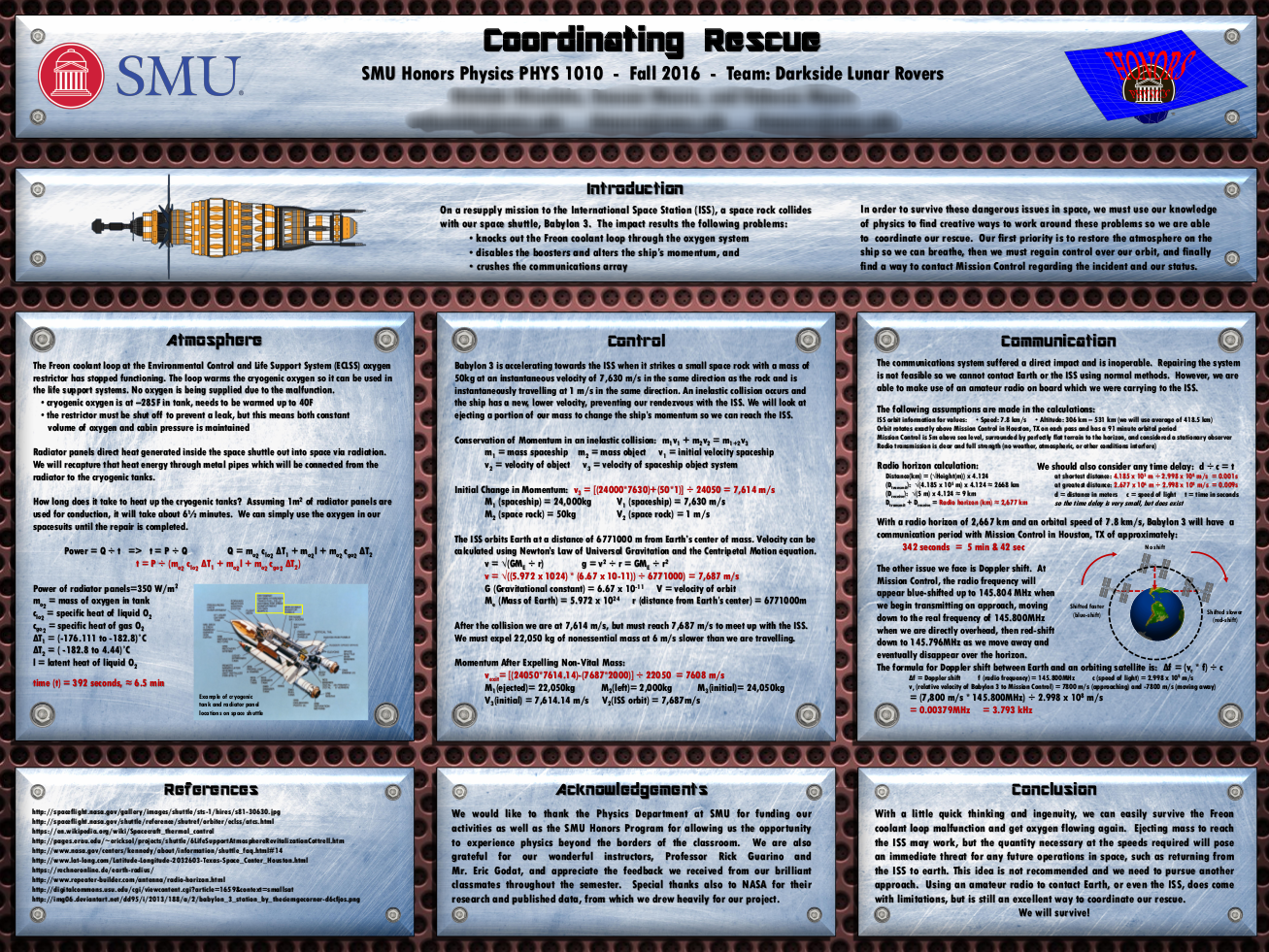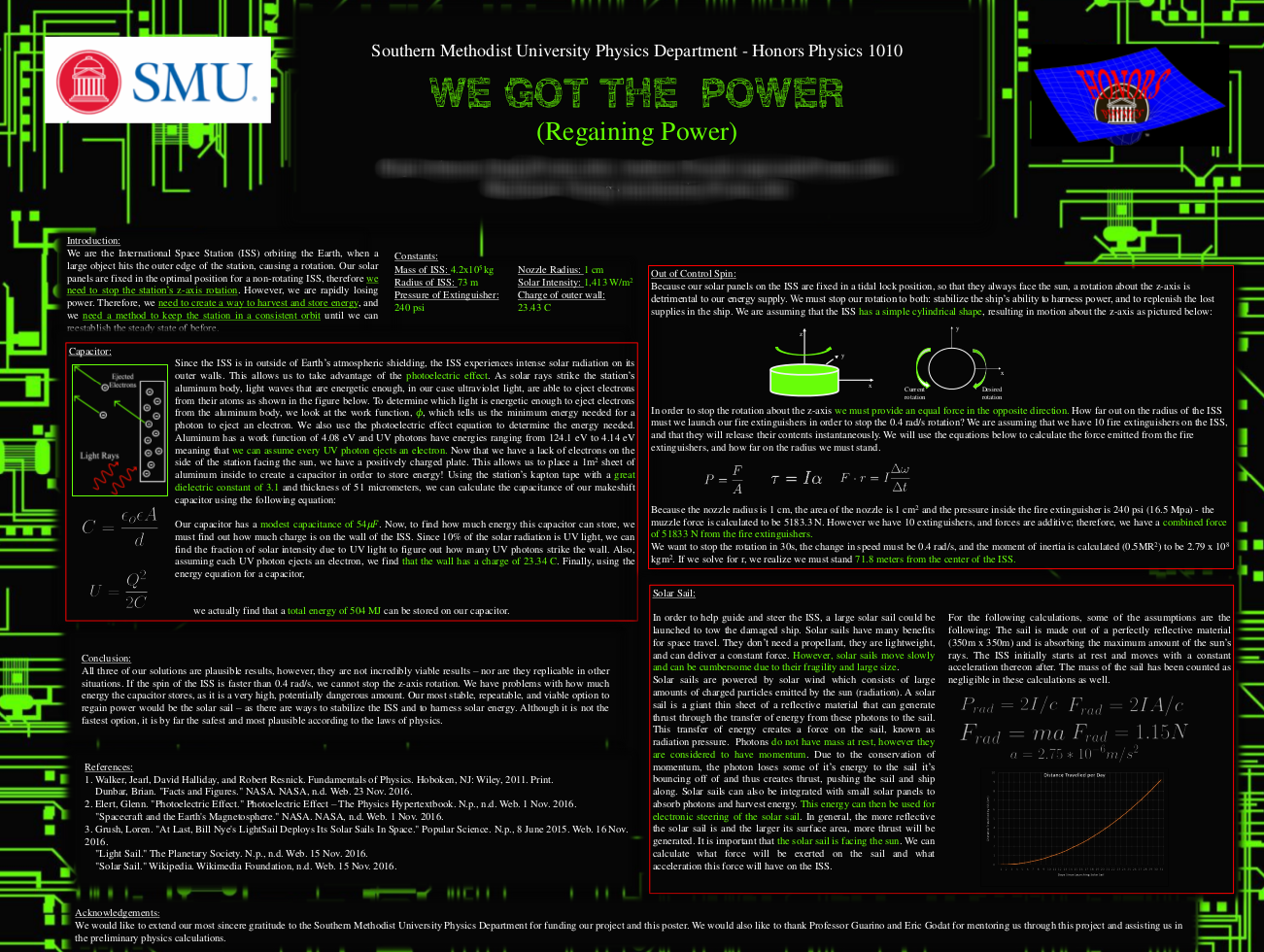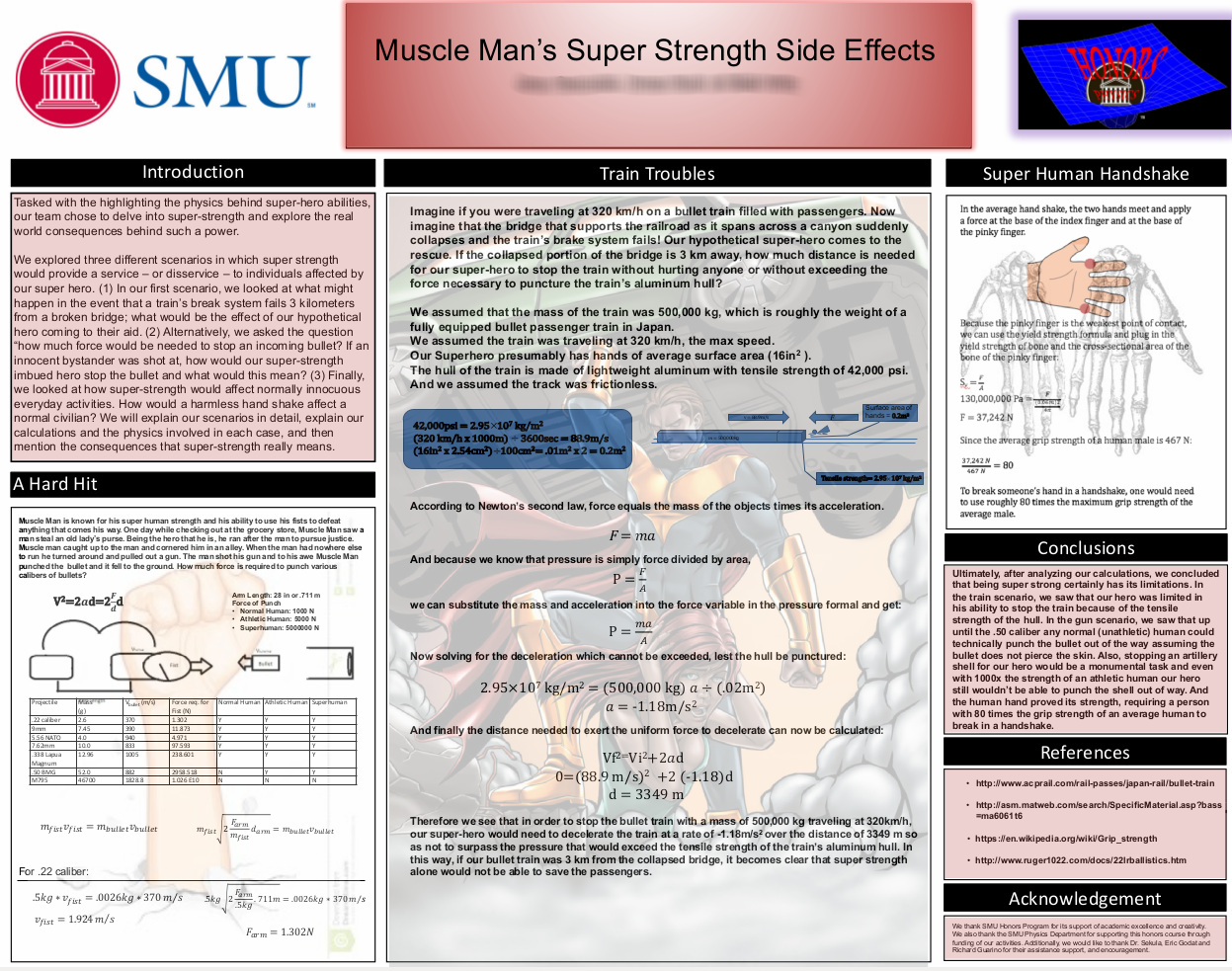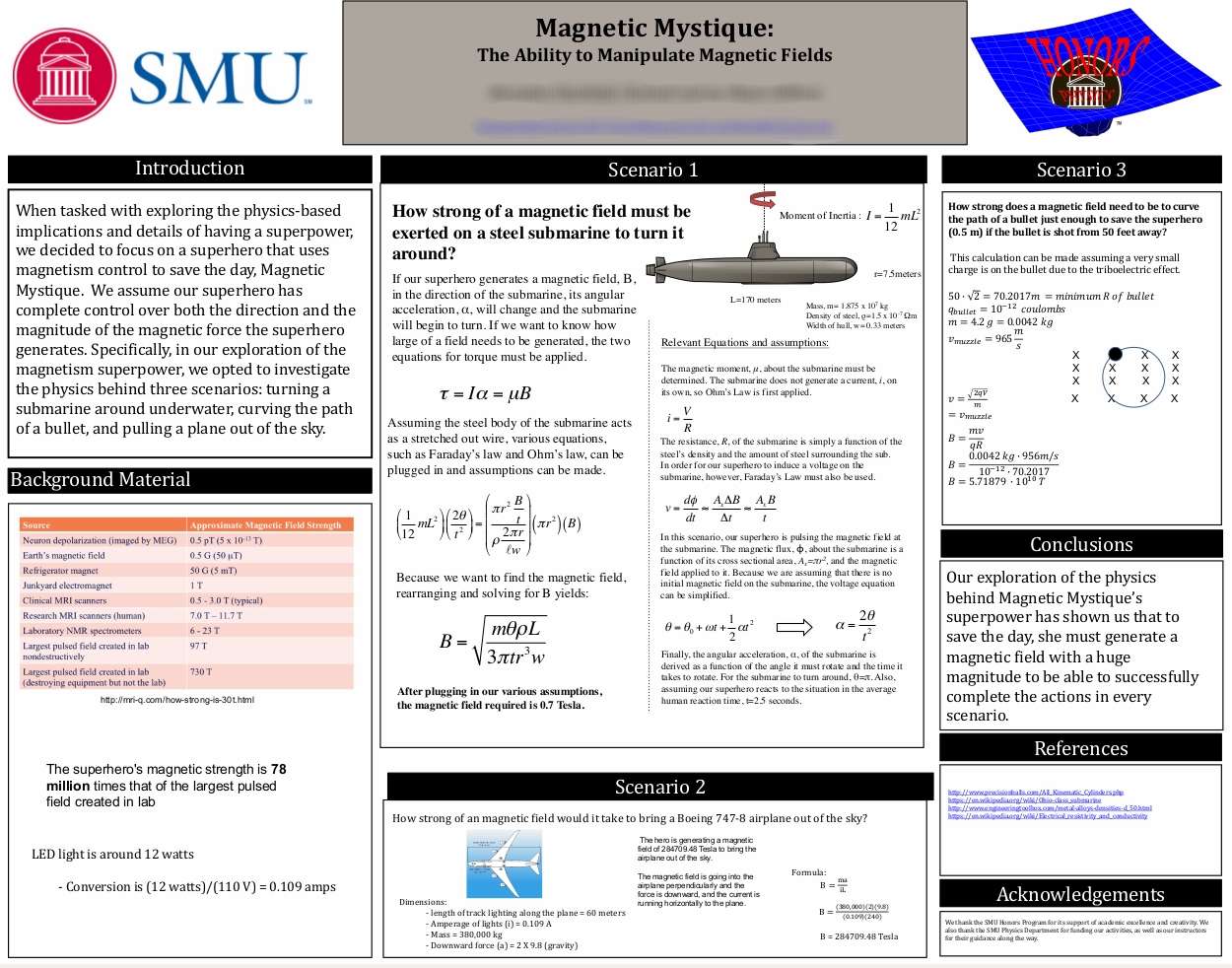Honors Physics at SMU
As a graduate student at SMU, it is rare to be promoted to Instructor and be given your own class. I was fortunate to be picked to teach Honors Physics 1010 as the sole instructor. With this came the opportunity to design and plan an entire years worth of lectures, activities and, most importantly, Grand Challenge Problems.
The Grand Challenge Problem is a semester-long, open-ended question given to teams of undergraduate students in physics to encourage them to think outside the textbook and dive a little deeper into the scientific process. This approach gives the course a unifying theme and culminates in a research symposium where the students present their work to an audience of physics faculty, university administrators and their peers. The course has gotten excellent feedback from students and has helped to increase the number of majors in the physics department.
Lost in space
The first semester I taught Honors Physics, the Grand Challenge centered around the idea that the students had been in some sort of space-related catastrophe (like those depicted in Apollo 13, the Martian, Gravity, etc...) and had to try to survive. The students came up with a variety of scenarios, from explosions on board to being struck with space junk, as to why they were stranded and were told to focus on a single critical system for survival. Some of their outstanding and creative results are shown below.
Additionally, I designed in-class activities to guide their progress through the semester. These activities ranged from practice presentations (called Collaboration Meetings), where students would present their work-in-progress research to their classmates and open themselves up for constructive criticism, to hands-on experiments based on physics principles useful for their research, the photoelectric effect and rotational motion for example, to group problem solving activities where teams would compete to solve a problem using observational and laboratory skills.
You just got a cool new superpower, Now what?
My second semester of teaching Honors Physics was based on the physical implications of having a superpower. The students were allowed to select a superpower with complete freedom to define their fictional hero's abilities under two conditions 1) their power must obey all the laws of physics beyond its existence (for instance, shooting lightning is allowed but all of electro-magnetism applies the moment they leave your fingertips) and 2) their hero is immune to their own power (this was necessary to prevent gristly deaths to the heroes, such as the aforementioned lightning burning your hands off or blinding you).





